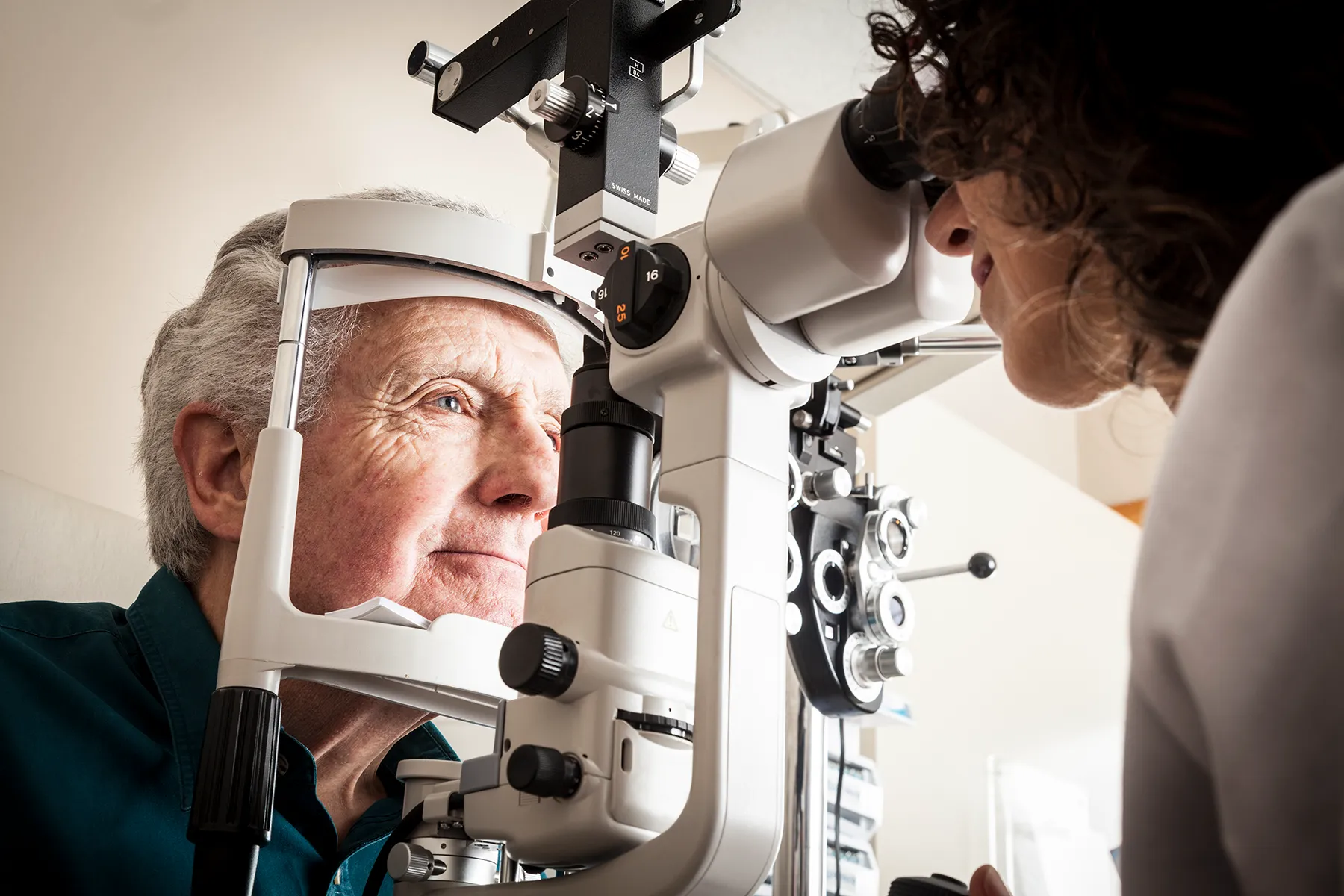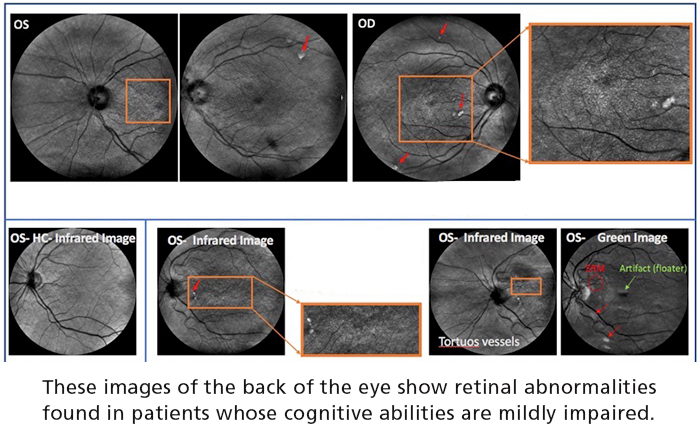Using Eye Exams to Detect Alzheimer’s Disease

The eyes reveal clues to your brain’s health.
If, as Shakespeare said, the eyes are windows to the soul, the retina is a window to the brain.

Located at the back of the eye, the retina sends visual signals from the eyes to the brain. Research indicates that it can also reveal clues about brain health. For example, people with Alzheimer’s disease often have visual problems. Since the disease develops decades before symptoms occur, understanding the relationship between the retina and brain may help doctors detect Alzheimer’s early, when treatment is most effective.
That’s the hope of Dr. Delia Cabrera DeBuc, research associate professor at Bascom Palmer Eye Institute, part of the University of Miami Health System. She studies the link between Alzheimer’s and the retina in her work at the McKnight Vision Research Center.
We can use the eye to predict problems in the brain.
Dr. Delia Cabrera DeBuc
“Disturbances in retinal blood flow or structure, for example, are linked to cognitive function.”
In her study, she investigated the correlation between the retinal vascular complexity and neurodegenerative changes in patients with cognitive impairment.
“We looked at several things all at once: the retinal structure, the vascular condition, and the retinal function,” says Dr. Cabrera DeBuc.
During the study, researchers used advanced techniques, including retinal imaging, full-field electroretinogram (F-ERG) and visual performance exams on each patient. With the F-ERG, a light is shined into the eye of the patient. They measure the time it takes for the retina to respond to that stimulus — a dynamic measurement referred to as “implicit time.” They found that the response time was delayed in all patients with cognitive impairment compared to the healthier population, according to Dr. Cabrera DeBuc.
Experts looked at the participant’s fractal dimension — a measurement of the vascular network— and found that patients with Alzheimer’s or another brain impairment had significantly altered vascular networks.
There is more evidence to suggest that there is a correlation between eye health and brain health.
If retinal dysfunction and vascular changes point to cognitive impairment, a multimodal approach may be used to detect mental impairment versus individual biomarkers.
It’s encouraging news for Dr. Cabrera DeBuc who’s searching for a simple, non-invasive, low-cost way to deliver this approach, especially in community settings, to enhance disease detection and hopefully enable early diagnoses and monitoring of disease progression.
“My dream is to be able to produce this at the level of the primary care physician because that’s who patients see most.”
Written by a staff writer at UHealth.
Tags: Alzheimer's Disease, Bascom Palmer Eye Institute, Delia Cabrera DeBuc, eye exams, McKnight Vision Research Center, OCT, optical coherence tomography, research studies, University of Miami Health System
